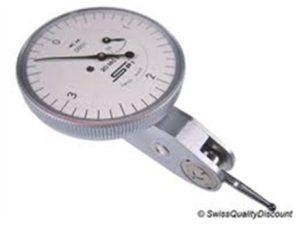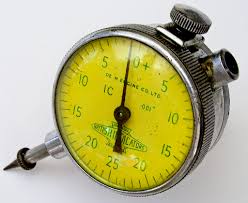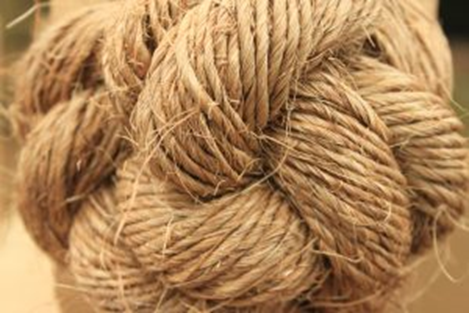Dial test indicator
Objects:
- Dial gauges are used to measure the flatness and inclination of objects.
- It is used to check round bar roundness.
- the flatness of an object as compared to the flatness of the standard object.
- In the mechanical field, dial gauges are used to check the flatness and alignment of various jobs and workpieces.
Dial test indicators are instruments of high precion, used for comparing and determining the variation in the sizes of component. This instrument cannot give the direct reading of the sizes like micrometers and vehicle calipers.
A dial test indicator magnifies small variation sizes by means of a pointer on a graduated dial.

Principle of working:
The magnification of a small movement of the plunger or stylus is converted into a rotary motion of the pointer on circler scale.
Types of dial test indicator.
- Plunger types.
- Lever type.
Parts of dial test indicator
- Pointer
- Rotatable bezel
- Bezel clamp.
- Back lug
- Transparent dial cover.
Different types of dial test indicator stands
- Magnetic stand with universal clamp.
- Magnetic stand with flexible post.
- General purpose holder with cast iron case.

Summary : The magnification of the small movement of the plunger is Converted into a rotary motion.
7 critical uses of dial gauge indicators in this short yet informative layout. They are:
1. For Workpiece Alignment
“Consequently, engineers then reinstall the disc; failure to do so properly can result in damaged studs and uneven torque.”
2. To Identify Lateral Run-out
Dial gauge indicators find significant application in automotive disc brakes where they are used to check lateral run-out.
3. For Calibrating Machines
Before the production even begins, dial indicators are used to calibrate the machines in the workshop. This phase is the first one in the manufacturing process used to ensure maximum accuracy in the output
4. To Measure Height Difference
Narrow limits and the height difference between them are difficult to measure. This difference is where the role of dial gauge indicators comes in. They can measure such minute height differences with ease.
5. To Detect Deformations
During the manufacturing process, deformations such as compression and tension are bound to arise. Therefore, it is essential to identify and eliminate them using dial gauge indicators.
6. Checking Positional Errors
Moreover, dial indicators play a critical role in detecting positional surface errors such as alignment, squareness, and parallelism.
7. Detect Geometrical Errors
Accurate geometry is imperative in the manufacturing process. This fact is why dial gauge indicators are used for determining errors in taper, roundness, and ovality.
When it comes to linear measurement, engineers prefer dial indicators for their high accuracy. In manufacturing, they play a pivotal role in ensuring precision and consistency. Additionally, dial indicators are essential for machine calibration and initial setup.
MCQ
TEST 2
contact:
for more details visit our



